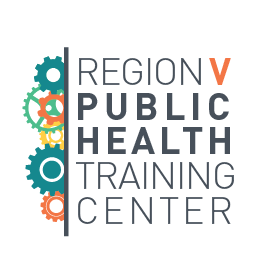This post comes from Hannah Geressu, BA, MPH(c) at the University of Minnesota School of Public Health. Geressu is a student in the 2022 RVPHTC field placement program.
The United States is no stranger to dysfunction and turmoil in its healthcare system. Long before the Supreme Court’s landmark ruling in Dobbs v. Jackson Women’s Health Organization that overturned Roe v. Wade, the consensus on American healthcare was abundantly clear: “broken”, “inefficient”, “a mess”, and “the worst” in overall performance compared to other high-income countries. Unfortunately, the fall of Roe will sow further division in the country’s fragmented healthcare landscape and worsen health disparities as states settle into two camps on either side of the abortion issue. The immediate consequences of the Dobbs ruling, such as physician relocation and new legal gray areas, signal turbulent years to come in the national fight over reproductive rights. However, recent developments in medicine and technology may keep safe abortions within reach and spur innovative methods for overcoming abortion restrictions.
How Will States Enforce Abortion Laws?
Shortly after the Dobbs ruling, Republican Senator Josh Hawley predicted that the overturning of Roe v. Wade would result in a “major sorting out” of states along party lines. As the sorting out process has shown thus far, vast regions of the U.S. are poised to become (or are already) abortion deserts – places where a person must commute hundreds or thousands of miles to access an abortion.
Elected officials have considered implementing travel bans as a way to block abortion access, although Supreme Court Justice Brett Kavanagh noted that such policies would fail “based on the constitutional right to interstate travel.” So-called “bounty hunter” abortion bans in Oklahoma and Texas feature an unprecedented legal tactic that uses sizable financial incentives to encourage state residents to sue anyone who “aids and abets” a prohibited abortion. President Biden has criticized this type of enforcement mechanism for creating a “vigilante system,” calling the Texas ban “almost un-American.”
Defiance and Uncertainty Post-Roe
Amid the cascade of new abortion restrictions in the wake of Dobbs, safe haven states have bolstered protections of individuals who must travel out-of-state to get a legal abortion. Hours after the Supreme Court overturned Roe v. Wade, the governors of California, Oregon, and Washington announced a “West Coast Offense” to safeguard people who travel to those states for an abortion. In their joint video statement, the governors pledged “to resist intrusions by out-of-state prosecutors, law enforcement, or vigilantes trying to investigate patients receiving services in our states.” Within days, other governors in the Midwest and Northeast also implemented measures providing sanctuary to those who obtain and provide legal abortion services in their states.
The state-versus-state battle over abortion rights has left countless healthcare providers in a difficult position of weighing the best course of treatment for a patient against the legal ramifications of patient care decisions. The added burden of navigating abortion restrictions on top of performing obstetric care has prompted some abortion providers to move elsewhere in the U.S. to continue their work lawfully.
Migration of the clinician workforce in response to Dobbs raises serious concerns about widening gaps in reproductive care access, particularly in medically-underserved areas where abortion is no longer allowed. Residents of these areas – especially individuals with low income and limited means to travel – stand to be largely, if not completely, cut off from in-clinic abortion services. For patients who now face insurmountable physical barriers to abortion services, creative solutions leveraging telemedicine, abortion pills, and drone technology offer recourse, though the legality of self-managed telemedicine abortion remains murky in states where anti-abortion lawmakers have vowed to crack down on cross-border abortion services.
Innovation in Abortion Access: Looking Forward, and Abroad?
Technological innovation in the modern era has dramatically reshaped healthcare delivery in the U.S. and much of the world. Telehealth services, which proved vital during the COVID-19 pandemic, continue to be a lifeline for millions of U.S. residents marooned in care deserts – some of which now double as abortion deserts. The issue of meeting abortion needs in distant, abortion-prohibiting places has sparked tremendous ingenuity in the delivery of abortion services, arguably best demonstrated by the pioneering Dutch physician Rebecca Gomperts. Over her decades-long career, Dr. Gomperts has delivered abortion pills to women around the world in a variety of ways, ranging from postal mailings to drone airlifts to mobile-clinic-ships anchored in international waters. Demand for abortion pills from one of Dr. Gomperts’ organizations, Aid Access, more than quadrupled merely days after the Supreme Court struck down Roe v. Wade, suggesting that online abortion services delivered from abroad will play a major role in U.S. healthcare going forward.
This next chapter in America’s reproductive rights history presents an opportunity for pro-choice leaders based in the U.S. and overseas to work collaboratively toward keeping safe abortions available to all who want or need one. Maintaining abortion access across the U.S. in the years ahead will require visionary thinkers like Dr. Gomperts to utilize digital-age tools for speedy, discreet, and reliable modes of abortion care. With Roe gone and a new, divisive era in U.S. healthcare underway, novel approaches to providing abortion services will be critical in bridging legal, financial, and physical obstacles that would otherwise impede access to needed abortion care and exacerbate health disparities among birthing people.
More Resources:
- YouTube video: Dobbs v. Jackson: Understanding the Post-Roe Landscape | Petrie-Flom Center (Harvard Law School)
- Abortion Access is Public Health, Northwest Center for Public Health Practice

